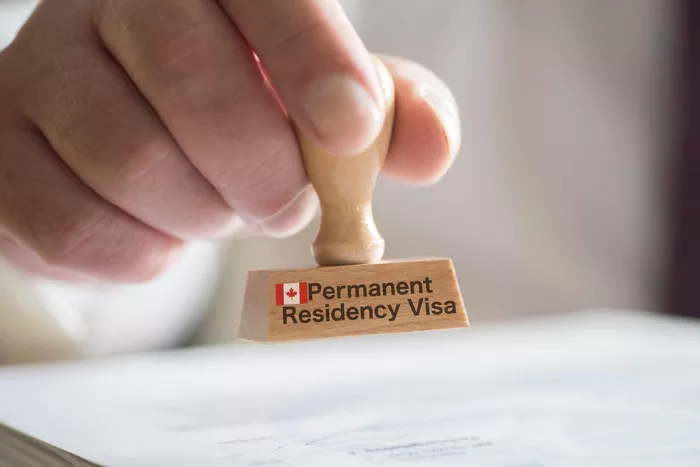Canada, renowned for its diverse culture, high quality of life, and robust economy, stands as one of the top destinations for immigrants seeking a better future. With its welcoming immigration policies and numerous pathways to permanent residency, Canada attracts individuals from all over the globe. Whether pursuing economic opportunities, reuniting with family, or seeking refuge, Canada offers various routes for obtaining permanent residency status. In this comprehensive guide, we delve into the intricacies of Canadian immigration processes, exploring the diverse avenues available to individuals aspiring to become permanent residents.
Understanding Canadian Permanent Residency
Before embarking on the journey towards Canadian permanent residency, it is essential to comprehend the significance of this status. Permanent residency grants individuals the right to live, work, and study anywhere in Canada indefinitely. Moreover, permanent residents enjoy access to social benefits, including healthcare coverage and education subsidies, akin to Canadian citizens. Additionally, permanent residency serves as a stepping stone towards Canadian citizenship, enabling eligible individuals to apply for citizenship after meeting certain residency requirements.
Express Entry System: A Gateway to Economic Immigration
For skilled workers aspiring to migrate to Canada, the Express Entry system stands as a primary pathway to permanent residency. Managed by Immigration, Refugees and Citizenship Canada (IRCC), Express Entry facilitates the selection and invitation of candidates based on their qualifications, work experience, language proficiency, and other factors. The system comprises three federal economic immigration programs:
Federal Skilled Worker Program (FSWP):
Designed for individuals with skilled work experience in occupations that are in demand in the Canadian labor market, the FSWP targets candidates who meet specific eligibility criteria, including language proficiency, education, and work experience.
Federal Skilled Trades Program (FSTP):
Tailored for individuals with experience in skilled trades, the FSTP seeks to address shortages in certain occupations within Canada. Applicants must meet requirements related to work experience, language proficiency, and job offers or certifications.
Canadian Experience Class (CEC):
Geared towards individuals who have gained skilled work experience in Canada, the CEC offers a pathway to permanent residency for temporary workers and international graduates who have adapted to the Canadian labor market and society.
Key Steps in the Express Entry Process
Navigating the Express Entry system involves several key steps:
Creation of Express Entry Profile:
Prospective candidates must create an online profile on the IRCC’s Express Entry portal, providing detailed information about their skills, work experience, education, language proficiency, and other relevant details.
Comprehensive Ranking System (CRS) Score Calculation:
Each candidate is assigned a CRS score based on factors such as age, education, work experience, language proficiency, and additional adaptability factors. Candidates are ranked against each other in the Express Entry pool based on their CRS scores.
Invitation to Apply (ITA):
Regular draws are conducted from the Express Entry pool, and candidates with the highest CRS scores receive invitations to apply for permanent residency. Upon receiving an ITA, candidates have a limited time to submit a complete application for permanent residency.
Submission of Permanent Residency Application:
zes family reunification and offers avenues for Canadian citizens and permanent residents to sponsor their family members for permanent residency. The Family Class sponsorship program enables eligible sponsors to sponsor their spouses, common-law partners, dependent children, parents, and grandparents for permanent residency in Canada.
Sponsors must meet specific eligibility requirements, including demonstrating the ability to support their sponsored family members financially. Additionally, sponsored individuals must undergo medical examinations and security screenings as part of the application process.
Refugee and Humanitarian Resettlement
Canada upholds its commitment to refugee protection and humanitarian assistance through various programs designed to support individuals fleeing persecution, conflict, or natural disasters. The Refugee and Humanitarian Resettlement Program offers pathways to permanent residency for refugees, asylum seekers, and individuals in need of protection.
Under this program, refugees may be resettled in Canada through government-assisted or privately sponsored refugee programs. Government-assisted refugees receive support from the Canadian government to establish themselves in Canada, while privately sponsored refugees are supported by private sponsors, such as community groups or organizations.
Additional Pathways and Special Programs
Beyond the primary pathways mentioned above, Canada offers additional immigration streams and special programs catering to specific groups and circumstances:
1. Start-Up Visa Program: Designed for innovative entrepreneurs with the potential to create high-growth businesses in Canada, the Start-Up Visa Program offers a pathway to permanent residency for eligible applicants who secure support from designated Canadian investors or venture capital funds.
2. Rural and Northern Immigration Pilot (RNIP): Aimed at addressing labor market needs in rural and northern communities, the RNIP enables participating communities to nominate eligible foreign workers for permanent residency. Candidates must meet community-specific eligibility criteria and receive a job offer from a designated employer in a participating community.
3. Caregiver Program: Recognizing the essential role of caregivers in Canadian families, the Caregiver Program offers pathways to permanent residency for caregivers providing care to children, elderly persons, or individuals with medical needs. Applicants must meet specific work experience and language proficiency requirements.
4. Atlantic Immigration Pilot (AIP): Targeting the Atlantic provinces of Nova Scotia, New Brunswick, Newfoundland and Labrador, and Prince Edward Island, the AIP aims to attract and retain skilled immigrants to support economic growth in the region. Eligible candidates must receive a job offer from a designated employer in one of the participating provinces.
Conclusion
Canada’s diverse and inclusive immigration policies offer numerous pathways to permanent residency for individuals seeking to build a better future in this vibrant country. Whether through the Express Entry system, Provincial Nominee Programs, family sponsorship, refugee resettlement, or special immigration streams, Canada welcomes skilled workers, entrepreneurs, families, and refugees from around the world. By understanding the various immigration pathways and meeting eligibility requirements, aspiring immigrants can navigate the journey towards Canadian permanent residency and embark on a new chapter of their lives in this land of opportunity and diversity.


